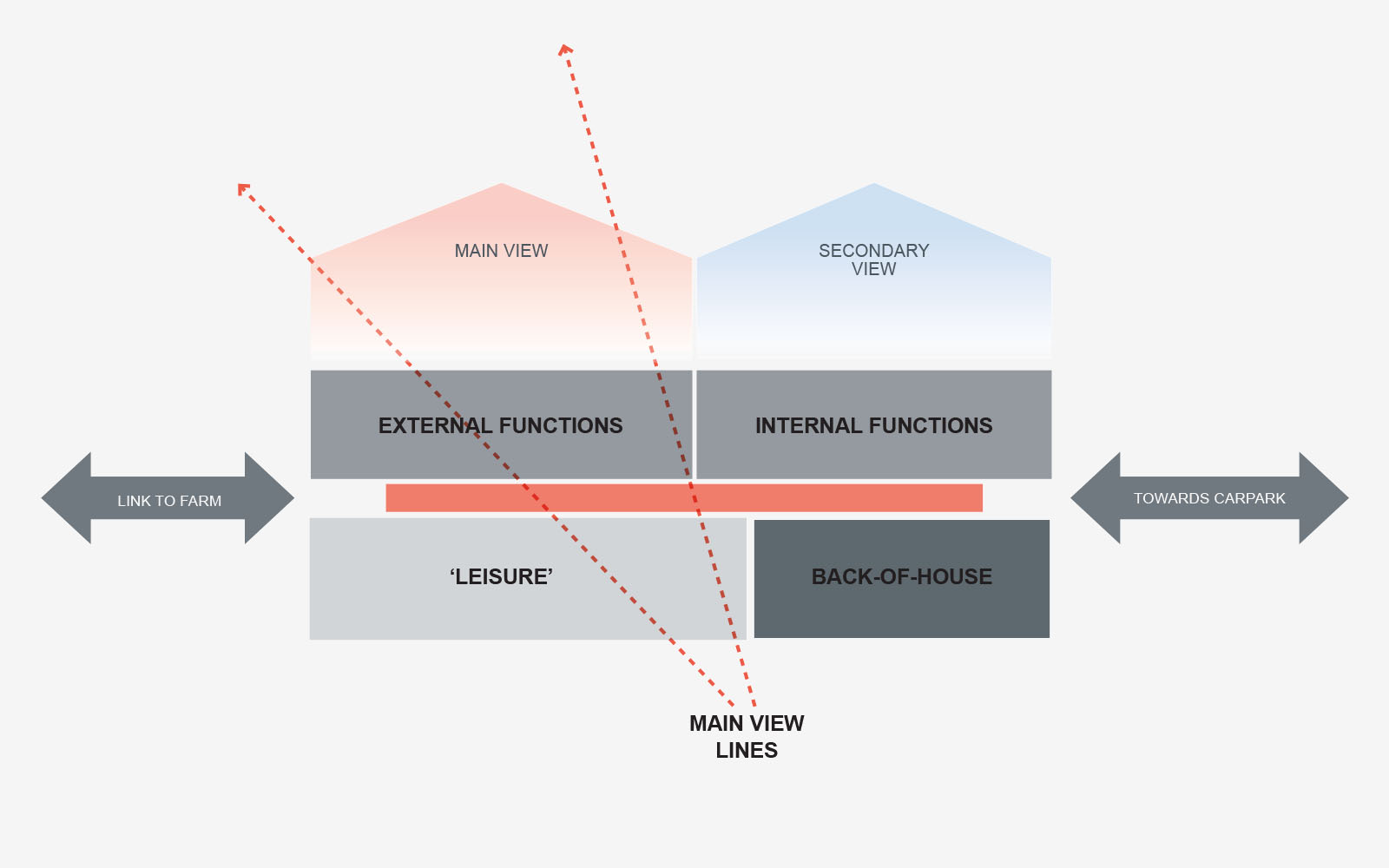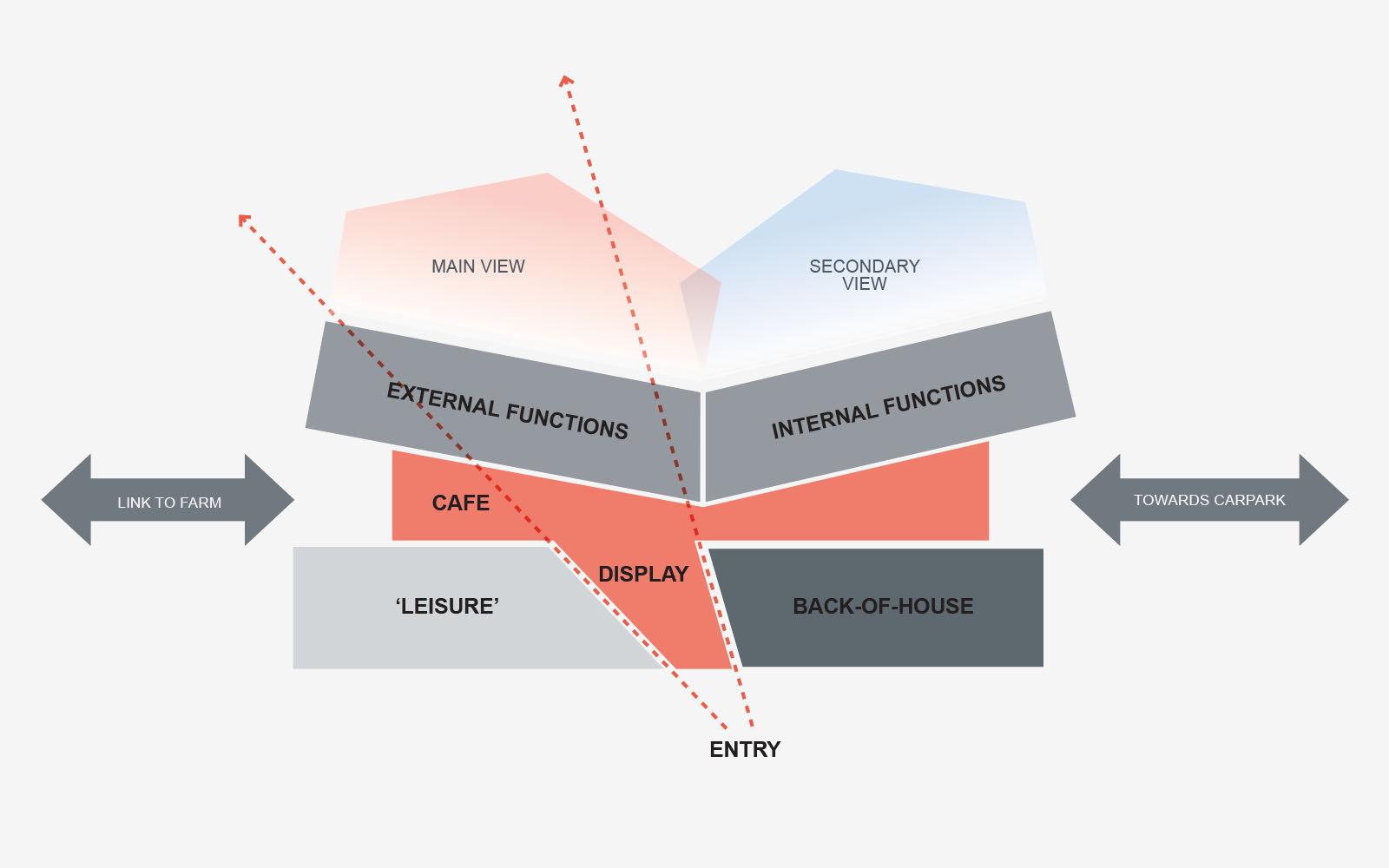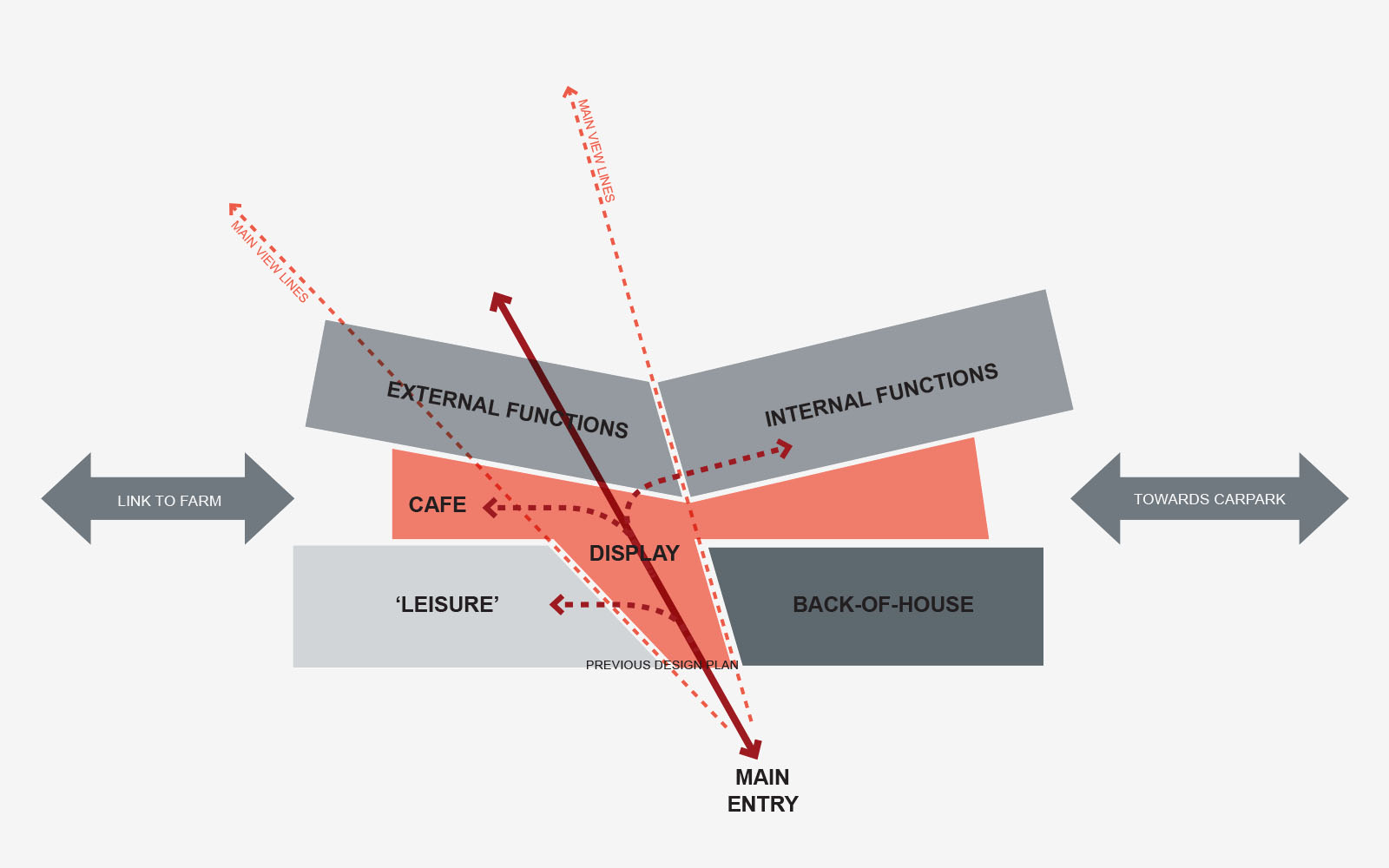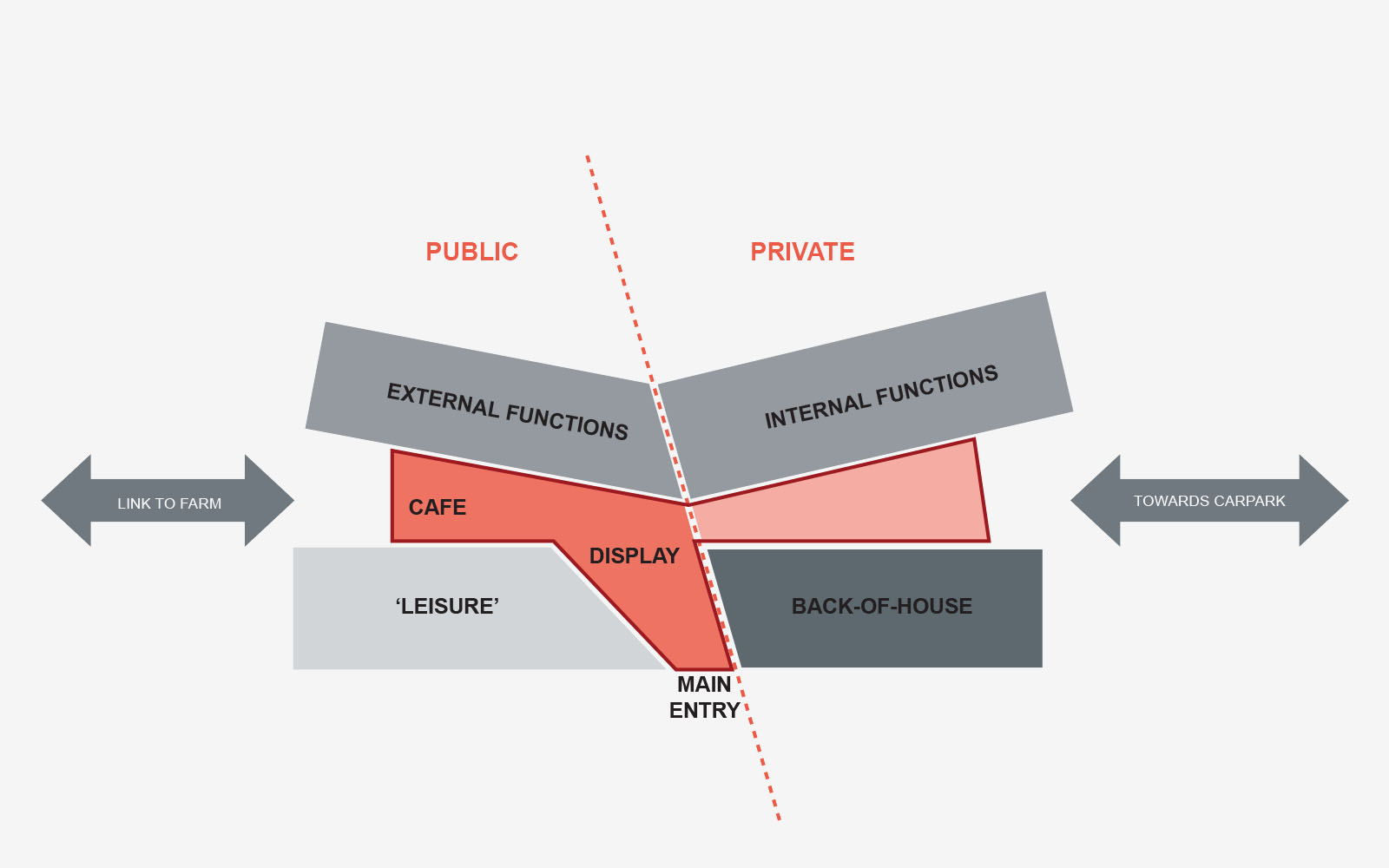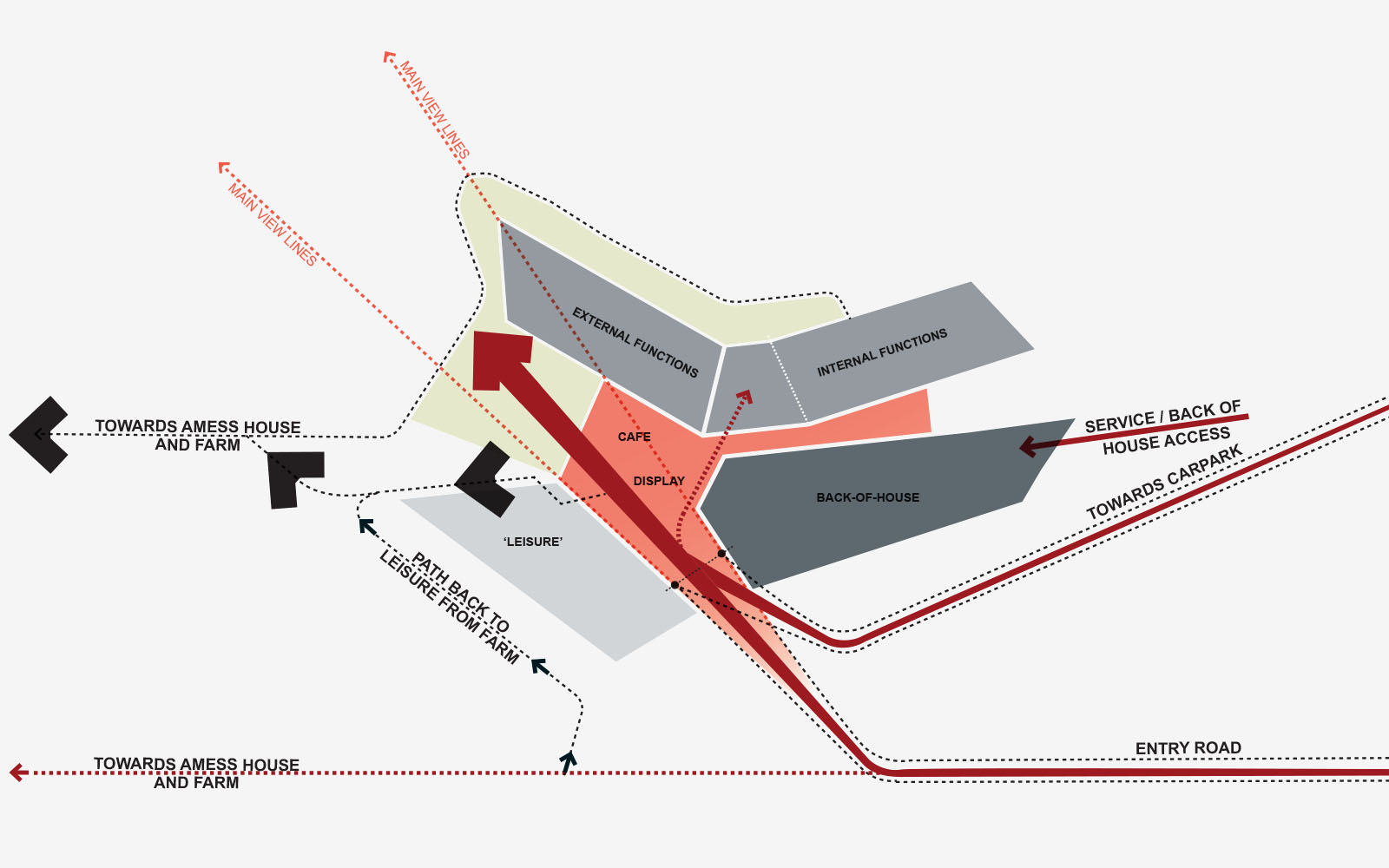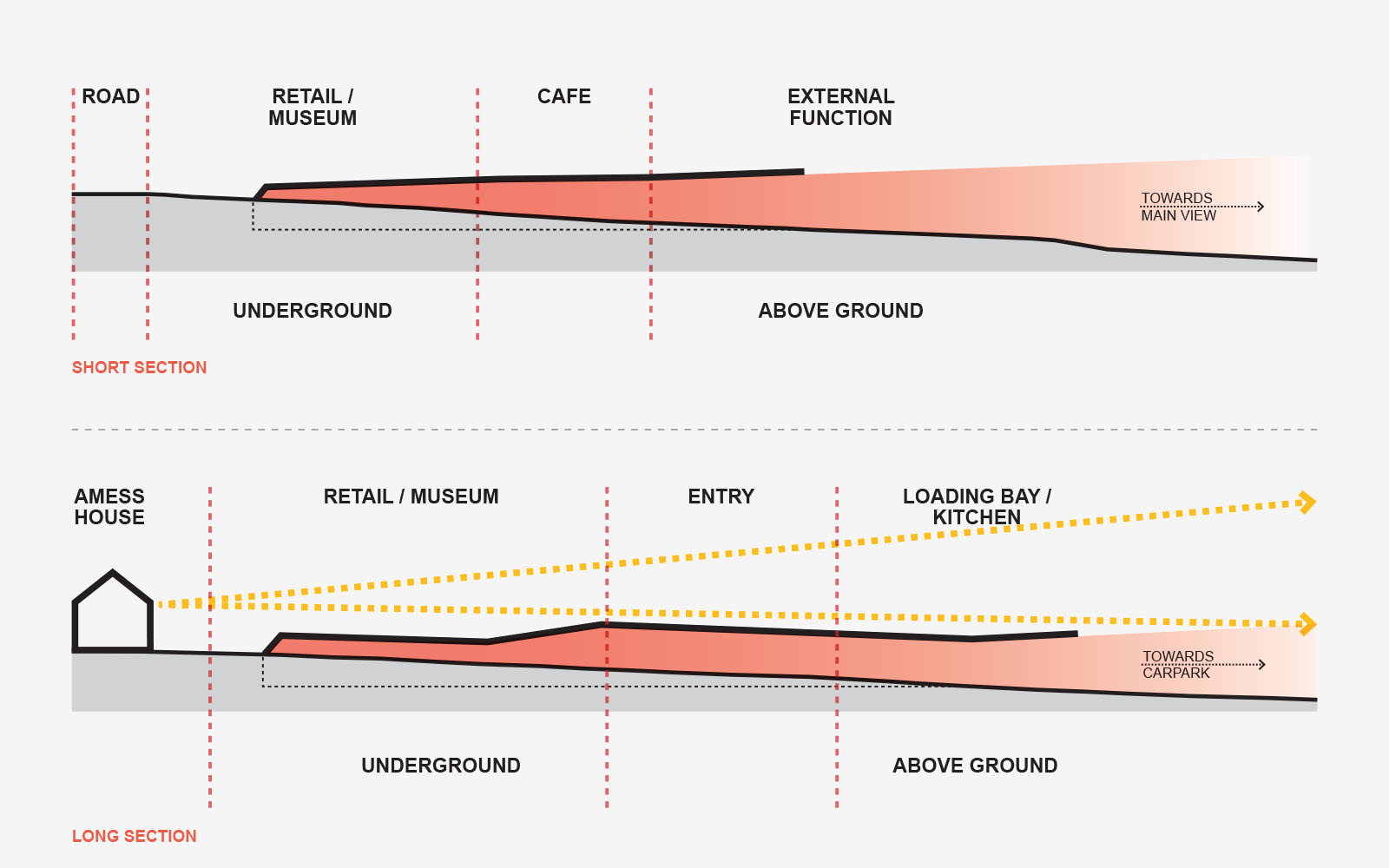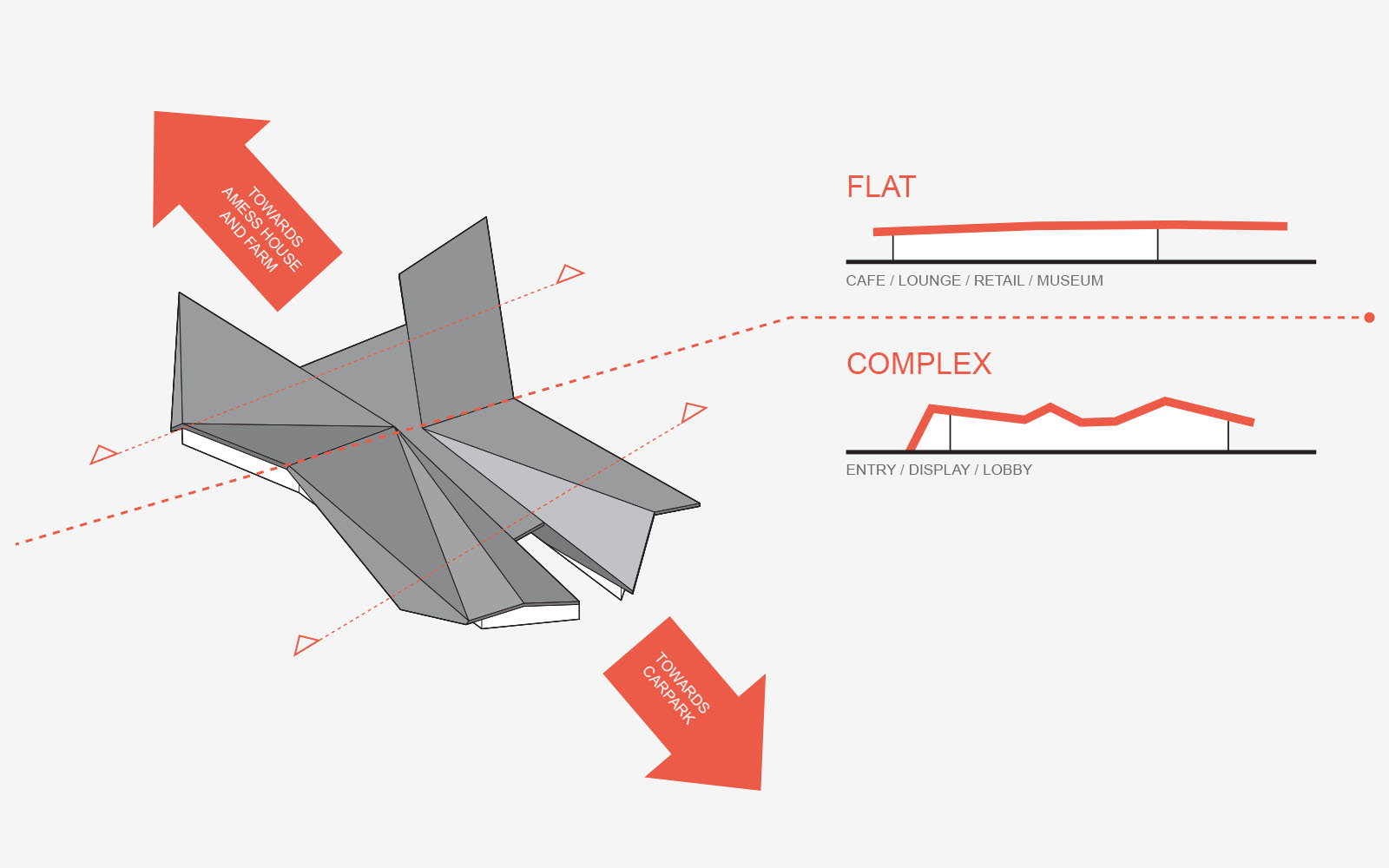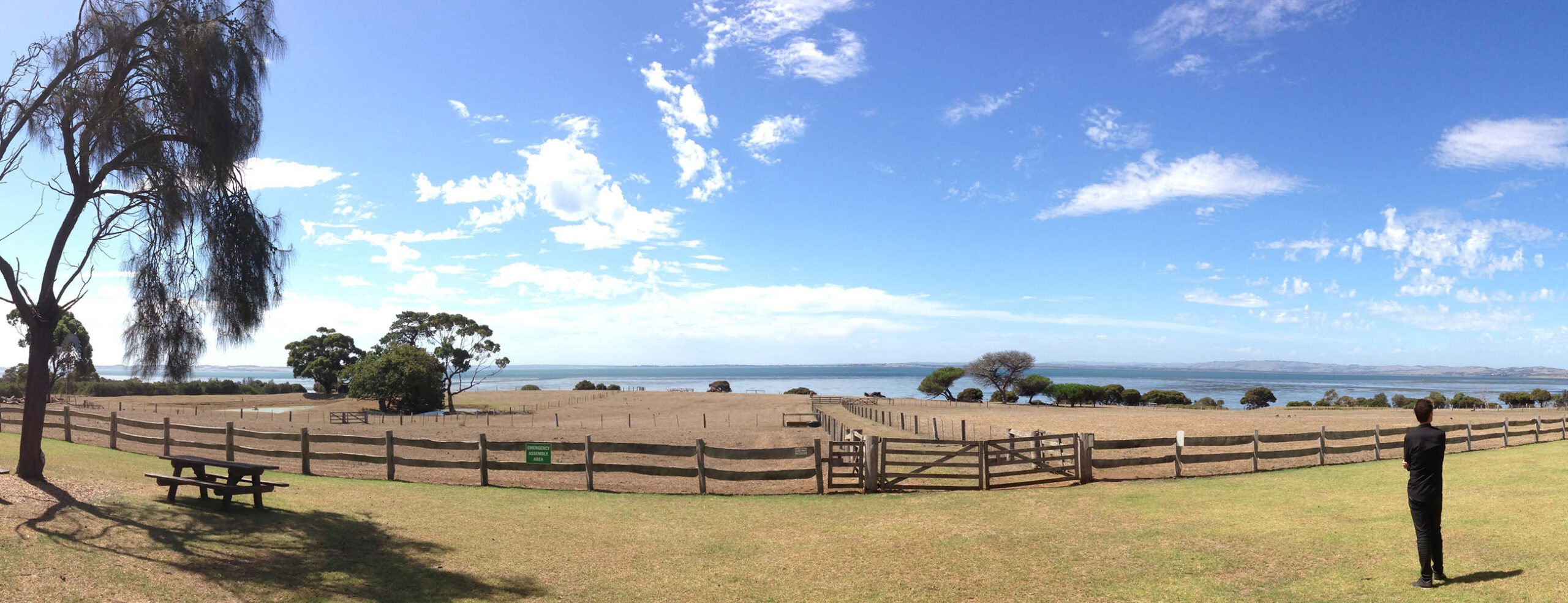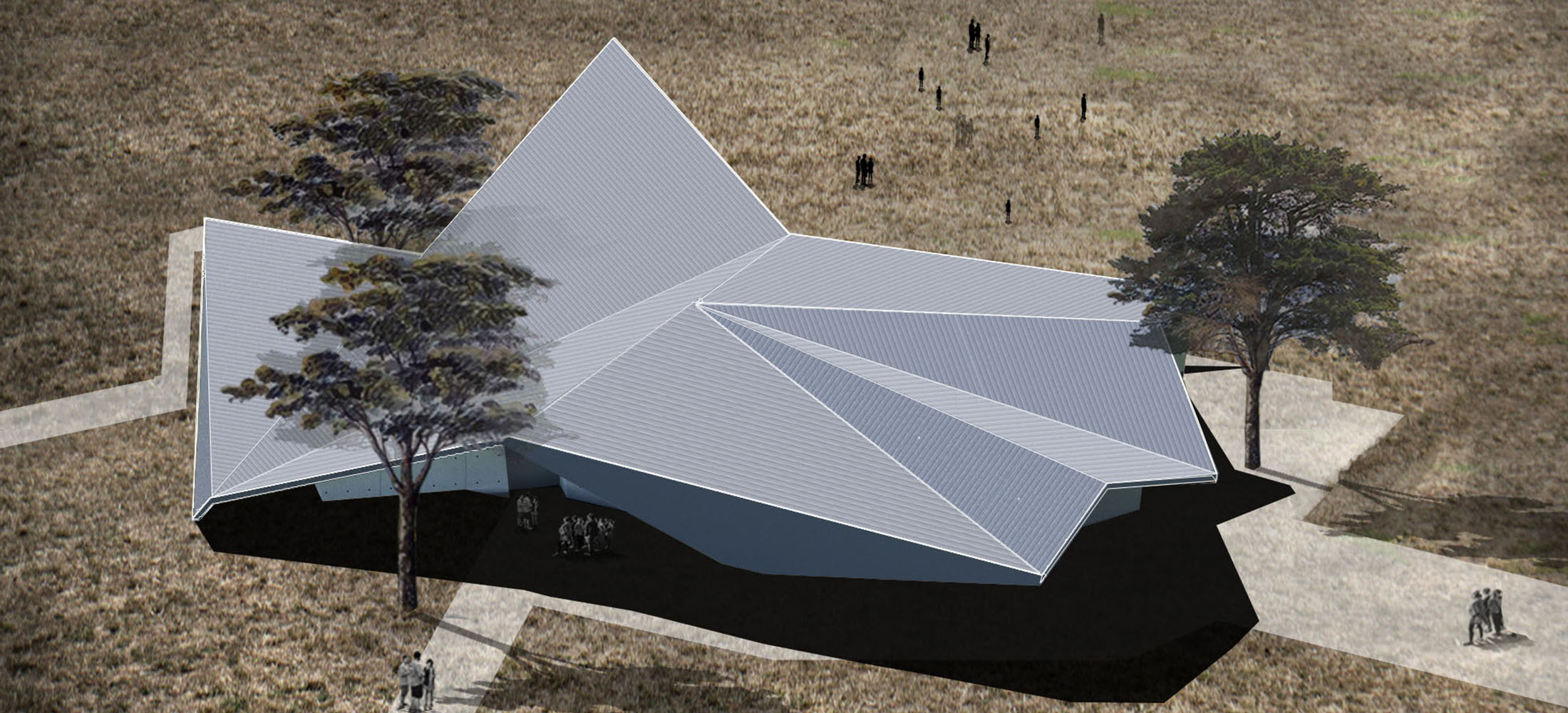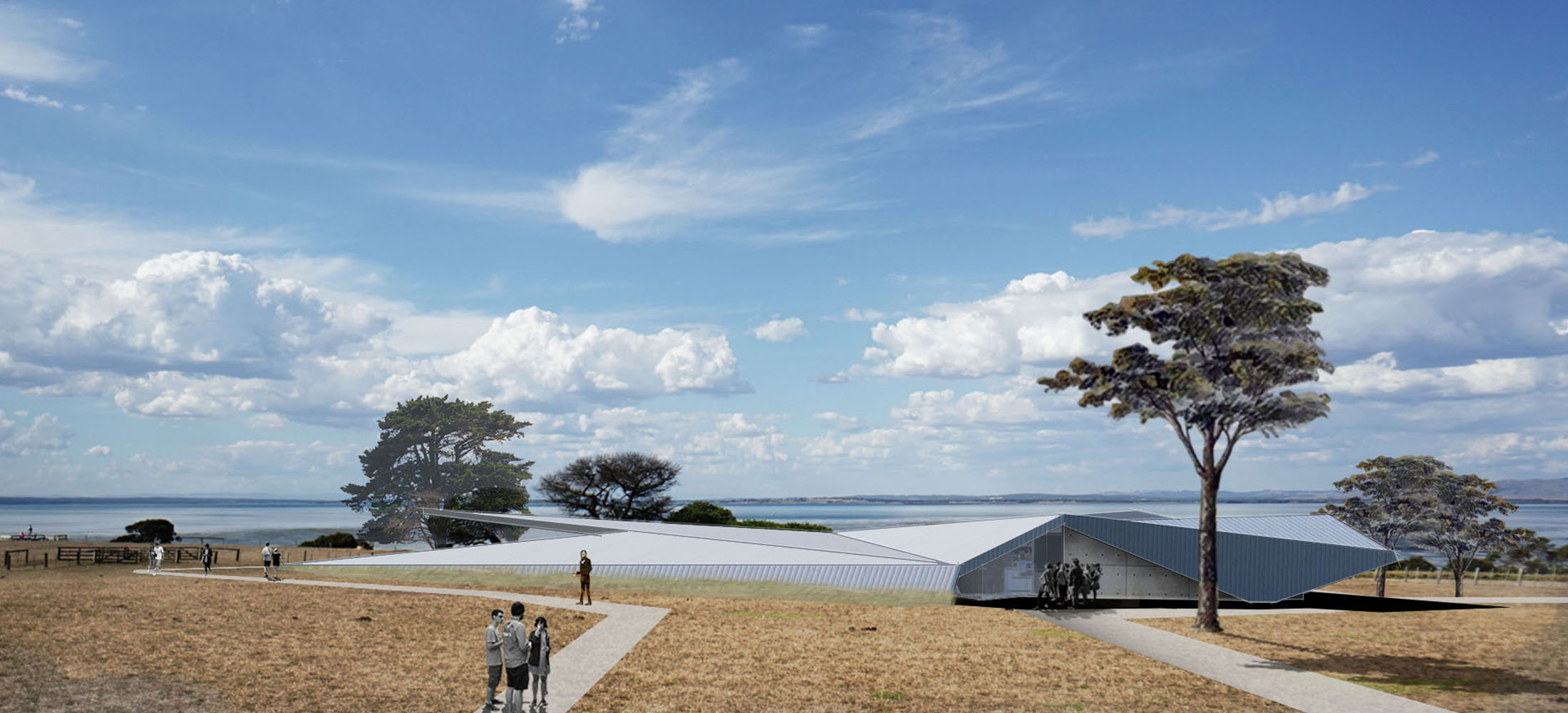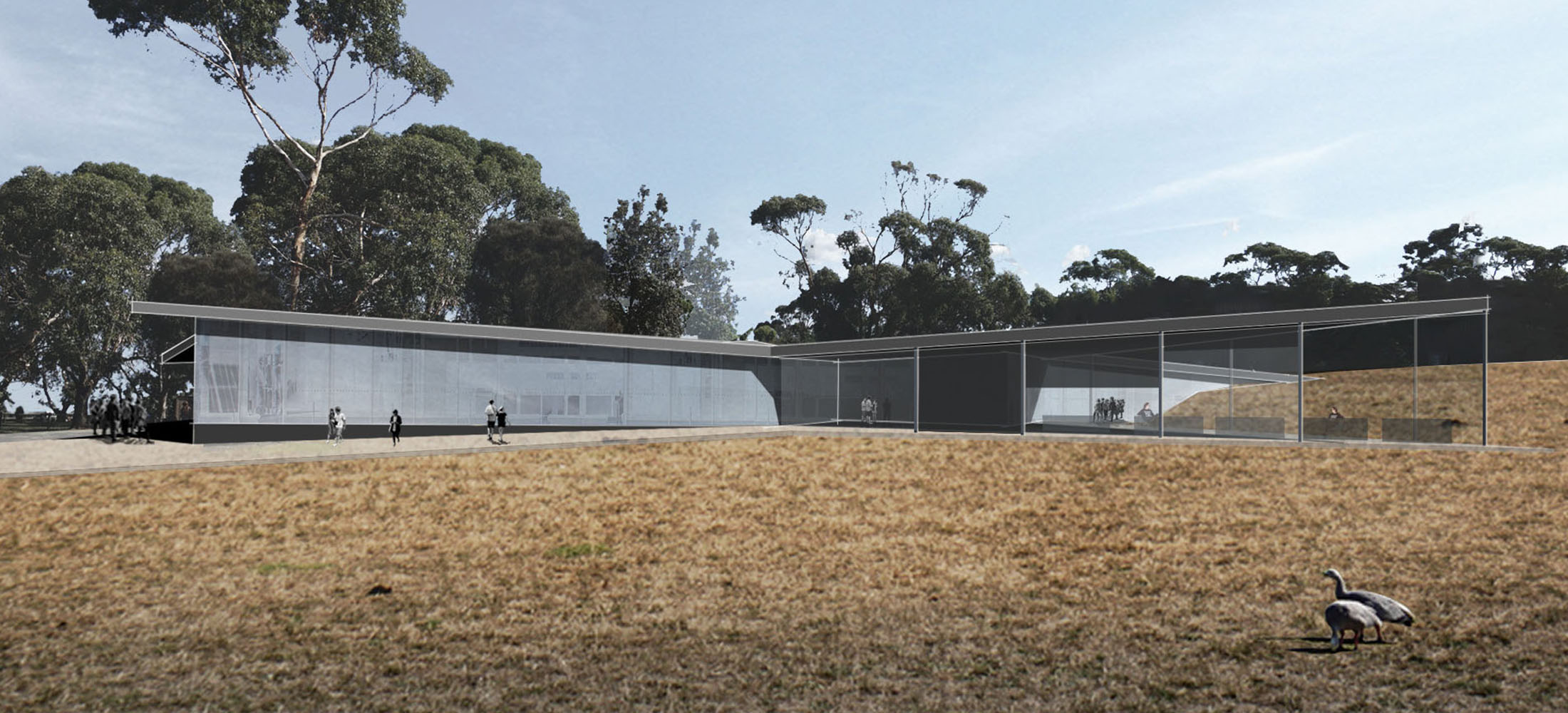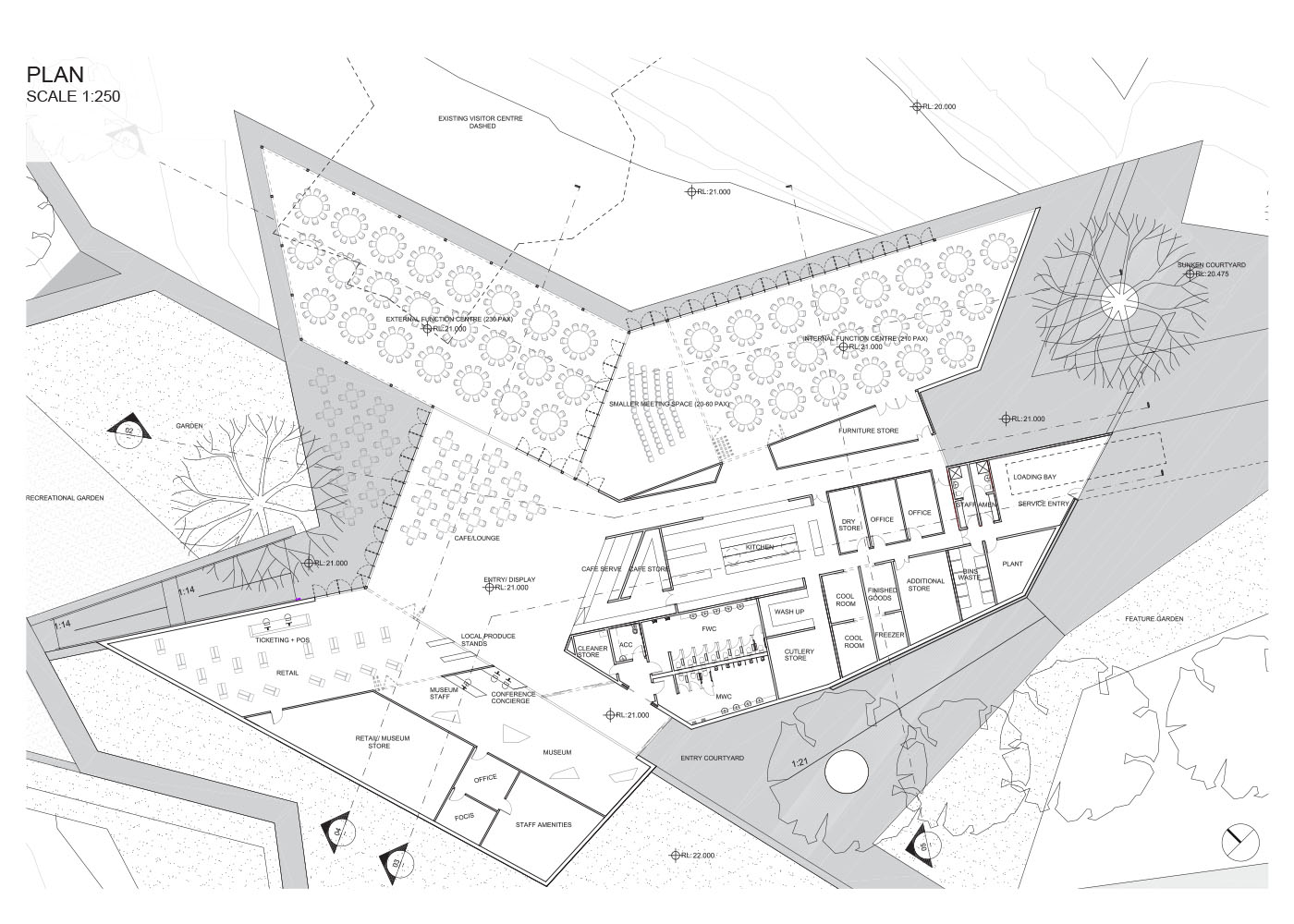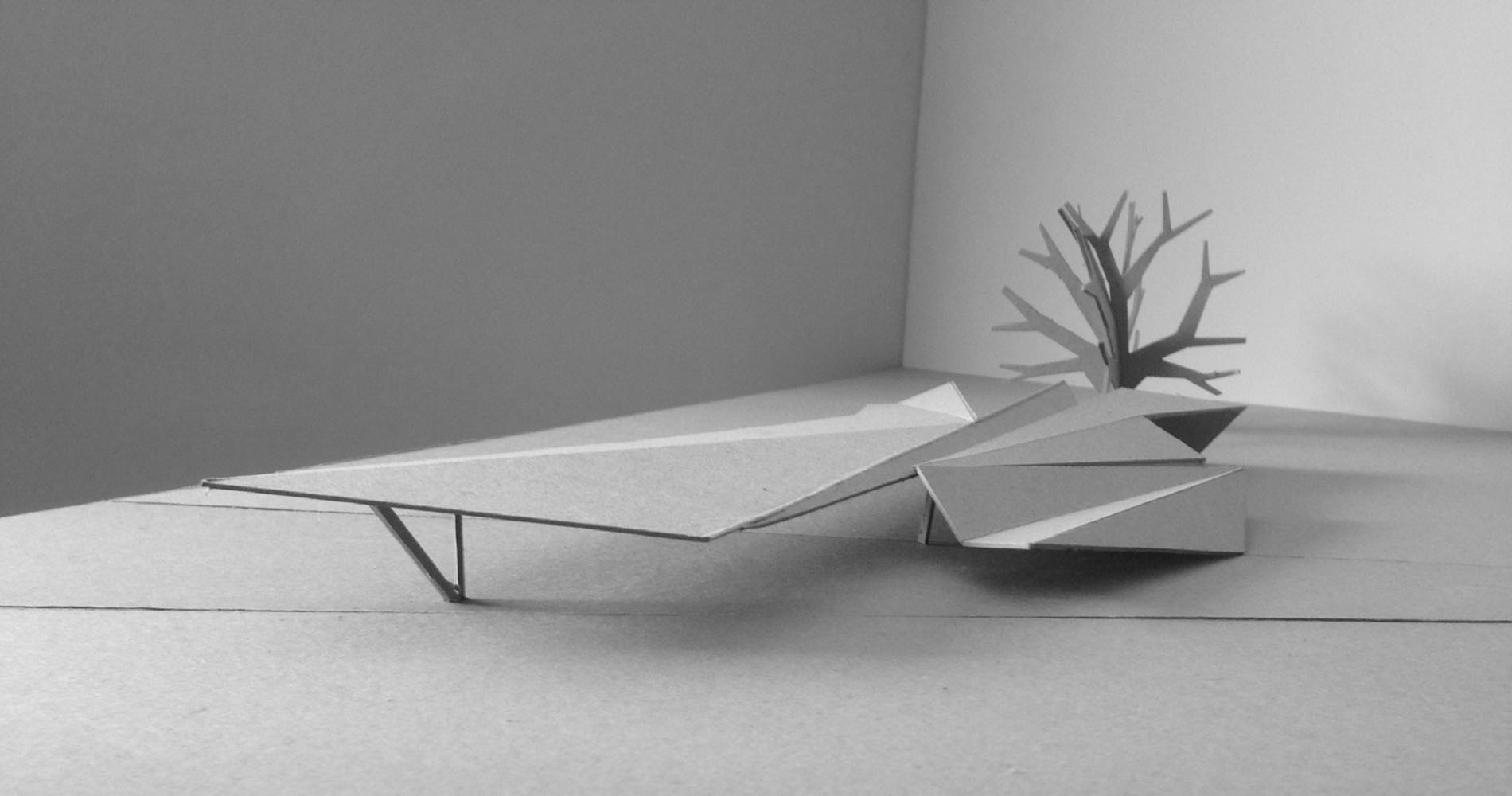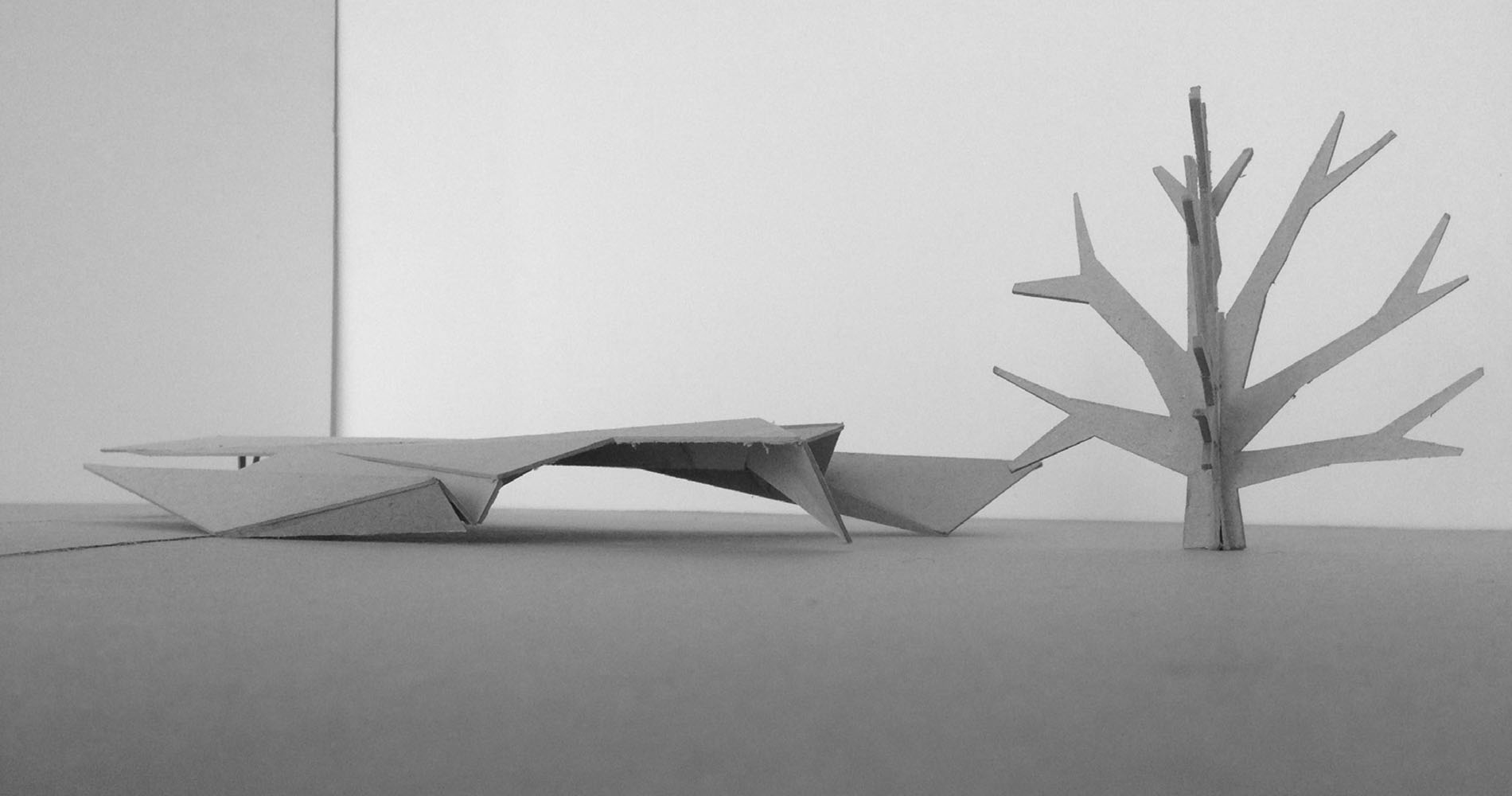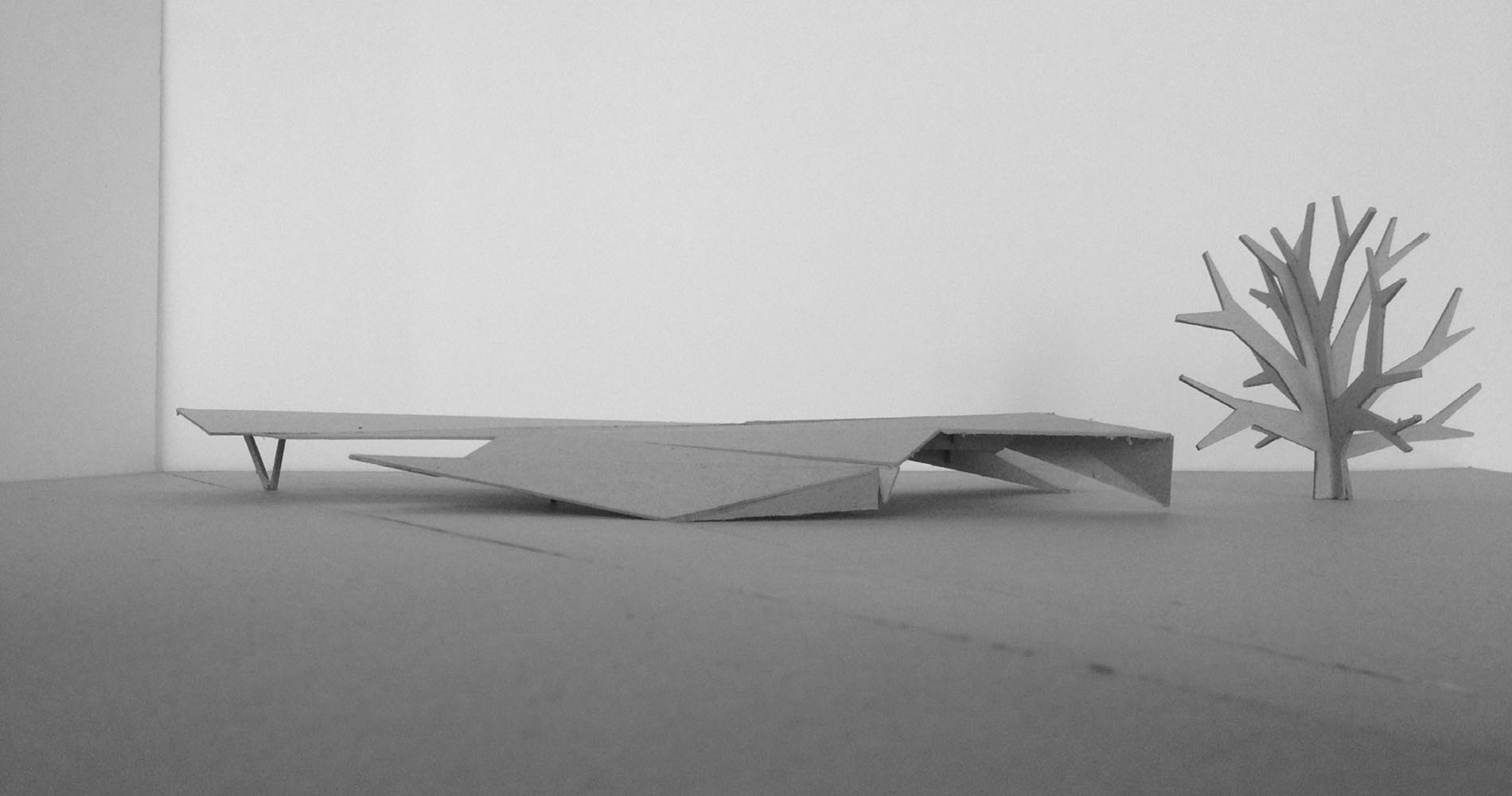Churchill Island Visitor Centre
Churchill Island is a tiny island of 57 hectares accessed from Philip Island in Victoria. This project formed a key entry point for people visiting the island for its multiple wildlife and landscape experiences, while also in itself becoming a key destination.
The centrepiece of the island is the farm which has been operating since the 1850s and was bought by former Mayor of Melbourne Samuel Amess in 1872. The small collection of original building are located at the centre of a clearing, with a tree-lined boundary that provides a wind break.
The new Visitor Centre will form an entry threshold to the island and be both a function and exhibition centre and the gateway to the heritage buildings. The building form is derived from the “found” geometries of the rooflines of the farm buildings but folded and creased in specific response to both internal functional requirements while ensuring key external views to and across the landscape are maintained. The design was completed in 2016 and awaits commencement.
- TYPE Public
- LOCATION Philip Island | AU
- YEAR 2016
APPROACH
The approach to the project has two distinct parts – programmatic and strategic organisation of a visitor facility on a sensitive site, and a spatial and formal exploration that could unite the existing farm with a contemporary building. These two logics come together through a series of diagrams that overlay traditional pavilion “shed” roofs over a dynamic plan that seeks to manage the visitor path, experience and the program, through the landscape. As the building plan warps and weaves in response to these conditions, the roof evolves from a conventional gable into a rippling sheet of steel.
